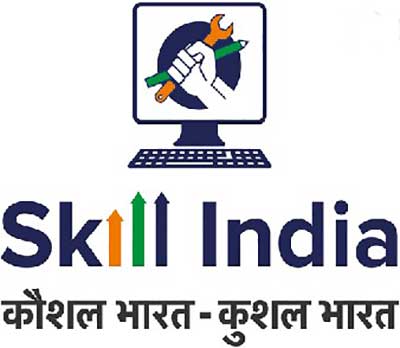Relevance: GS-2: Issues relating to development and management of Social Sector/Services relating to Health, Education, Human Resources
Key phrases: Digital skilling, Reskill, Upskill, Digitalisation, Hub-spoke model, Skill credentials, Informal sector, Employability
Why in News?
- The government will be launching a portal to skill, reskill and upskill citizens through online training. At present, as per the UNDP’s Human Development Report-2020, only 21.1% of the labor force was skilled in the period 2010-19 in India.
Present status:
- According to the World Economic Forum’s The Future of Jobs Report 2018, more than half of Indian workers will require skill development by 2022.
- Since India has 92% workforce involved in the informal sector, most of them are lacking any formal training and certifications.
- According to the India Skills Report, 46 percent of the students surveyed are found to be employable or ready to take-up jobs.
Skill development in India, Steps taken in Previous Budget:
- Skill development had enjoyed a significant moment in the spotlight in last year's Union Budget when the National Apprenticeship Promotion Scheme (NAPS) was launched as part of the 'fourth pillar' of that budget, which was reinvigorating human capital.
- In fact, the government had also announced a sum of Rs 3000 crore to be invested in the skilling of graduates and diploma holders in the country under the National Apprenticeship Training Scheme (NATS).
- Partnerships with the UAE and Japan had also been announced in order to train young professionals in vocational and technical knowledge and skills.
Focus on Skilling in present Budget-22:
- Digital Ecosystem for Skilling and Livelihood – the DESH-Stack e-portal: the government is launching an e-portal to skill, reskill and upskill citizens through online training. There will be API-based trusted skill credentials, payment and added discovery layers to find relevant jobs and entrepreneurial opportunities.
- Realignment of The National Skill Qualification Framework (NSQF):
It will be aligned with dynamic industry needs so that employability will be
boosted with the help of skilling programmes and partnerships with the
industry.
- Skilling programmes and partnership with the industry will be reoriented to promote continuous skilling avenues, sustainability, and employability.
- Starting focused relevant courses: In select industrial training institutes (ITIs), in all states, the required courses for skilling will be started.
Other initiatives taken by government in the past to boost skilling:
- Pradhan Mantri Kaushal Vikas Yojana (PMKVY): To enable a large number of Indian youth to take up industry-relevant skill training that will help them in securing a better livelihood.
- Deen Dayal Grameen Kaushalya Vikas Yojana(DDU-GKY): To transform rural youth aged between 15 to 35 years into an economically independent and globally relevant workforce.
- Pradhan Mantri Kaushal Kendra: State-of-the-art Model Training Centres envisaged to create benchmark institutions.
- Skill India Mission: To provide adequate training in market-relevant skills to over 40 crore youth by 2022.
- Skills Strengthening for Industrial Value Enhancement (STRIVE) scheme - To improve the relevance and efficiency of skills training provided through Industrial Training Institutes (ITIs) and apprenticeships.
NSDC (National Skill Development Corporation) was set up as part of a national skill development mission to fulfill the growing need in India for skilled manpower across sectors and narrow the existing gap between the demand and supply of skills. Though, it has been successful to some extent, there are still many challenges to achieve skilled India.
Challenges to skill development:
- Rural Urban Divide: There is a high level of rural urban divide which makes opportunities and outcomes unequal between rural and urban India.
- Information Asymmetry: Rural population is unaware of various schemes and development projects which they can be a part of
- Missing industrial linkages: Industries present relevant courses and their requirement is usually missing in the training programme.
- Huge financial investment: To keep pace with structural changes, India needs to invest in technological upgradation for skilling youth as per market demand.
- Overburdened responsibility: As per OECD data, the proportion of the working-age population (15-59 years) is expected to be over 64 percent of the population by 2021. It will be a massive burden on limited administrative capability.
Way Forward
- Decentralization of Skilling: Utilizing local resources and providing local opportunity for local development.
- Increasing States Participation: They can also sponsor them for higher training courses, involve them in government employments as well.
- Increasing role of Industries: They should be involved beforehand in ongoing training programs and can leverage their technology for better capacity building.
India must reap the benefit of its demographic dividend before it's too late and it gets transformed from a youth nation to an old one. "Learning should not stop with earning. Only a skilled person will grow in today's world. This is applicable to both people and countries," PM Modi said, on World Youth Skill Day, while exhorting the stakeholders to continuously skill, re-skill and up-skill.
Sources: The Hindu BL
Mains Question:
Q. In order to reap demographic dividend India needs to focus on skilling, reskilling and upskilling citizens. Discuss the initiatives taken and challenges associated in order to achieve skilled India. [250 words]









